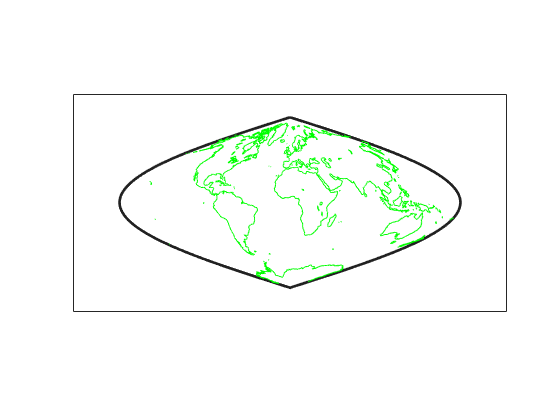plotm
Project 2-D lines and points on axesm-based map
Description
plotm(
uses name-value pair arguments to specify any number of Line Properties except for
lat,lon,Name,Value)XData, YData, and
ZData. Name is the property name and
Value is the corresponding value. Name
must appear inside single quotes (' '). You can specify several
name and value pair arguments in any order as
Name1,Value1,...,NameN,ValueN. Property names can be
abbreviated, and case does not matter.
h = plotm(___)
Examples
Input Arguments
Output Arguments
Tips
When you pass two points to the plotm function, the function
projects the locations of each point on the map and displays a straight line that
connects them, regardless of the map projection or the distance between the points. To
display a projected geodesic or rhumbline curve between two points, first insert
intermediate points using the track2 function.
Version History
Introduced before R2006a
